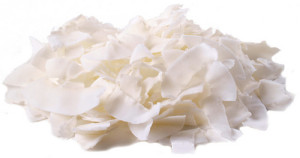A natural fatty alcohol in the form of a white, waxy solid. Also known as dacosanol.
Contents
Uses
An emulsifier that also keeps the oil and liquid parts of a solution from separating. Its other functions include altering the thickness of a liquid, increasing foaming capacity, and stabilizing foams. When applied to the skin, it gives it a smooth feel and helps prevent moisture loss. Many products incorporate this ingredient because of its unique sensory properties and non-greasy feel after application. It’s mainly used in face/body lotions and creams, but can also be found in deodorant, lipstick and foundation.
Cautions
One of the most common side effects that has been reported from docosanol is headache. Headaches caused by the drug tend to be mild and can occur in any region of the head. The intensity of the pain can, in some cases, interfere with the ability of remaining focused when working or when at school.
Skin irritation may also occur at the site of application. Usually, skin irritation is mild to moderate and does not need any further treatment. It may also diminish after prolonged use of docosanol.
The most serious side effects, although rare, are allergic reactions. Some of the patients experienced the symptoms of allergic reactions, including difficulty breathing, confusion, facial swelling, fainting,dizziness, hives or chest pain. Allergic reactions are medical emergencies and individuals who experience them are recommended to seek immediate medical care in order to prevent further complications.
Other side effects may include: acne, burning, dryness, itching, rash, redness, acute diarrhea,soreness, swelling.
Interactions
None are recorded.
Other names
Docosanol
References
Source: TruthinAging, https://www.truthinaging.com/ingredients/behenyl-alcohol
Wikipedia, https://en.wikipedia.org/wiki/Docosanol

